Where things are
Can't write any more today... coming up
1. a report on the Christopher Leinberger presentation plus some thoughts about this article, "Downtown Could Support Big Stores, Study Finds" and more contrasts between the independent unique retail of Portland and the chaining up of DC. And possible discussion of a similar report released in the last couple weeks in Baltimore, see "City ripe for retail rebirth, study says"
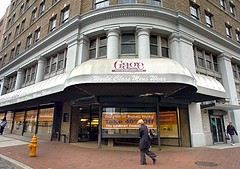 Pedestrians pass by a sign at Gage World Class Mens Wear store on Baltimore Street about going-out-of-business pricing. (Sun photo by Amy Davis) Oct 24, 2005
Pedestrians pass by a sign at Gage World Class Mens Wear store on Baltimore Street about going-out-of-business pricing. (Sun photo by Amy Davis) Oct 24, 2005Letter to the editor of the Baltimore Sun in today's paper:
City must do more to help retailers
When will Mayor Martin O'Malley and the Downtown Partnership wake up and smell the coffee? Another major independent retailer is leaving downtown and no one in City Hall appears to see this trend ("Gage era approaches the end," Oct. 25).
My store left Charles Street a year ago because it became too hard to do day-to-day business downtown. We did not get one phone call from a city official encouraging us to stay. We had to deal with an overzealous cop who constantly ticketed our delivery trucks, utility companies that felt free to pull up in front of our store at any time and start tearing up the streets for days or even months - the list goes on forever.
If the powers that be want good independent retailers to come back to downtown and survive and flourish, the city needs to make a major effort to support them, including a grand plan for retail development that involves incentives and cooperation with city officials.
Steven Appel, Baltimore
One of my biggest reservations about Chris Leinberger's talk yesterday, at least as it relates to the DC experience, is that there is little recognition of the need to specifically develop independent retail. If downtown is but another version of an average shopping mall, it provides little draw, because it will always be outdone by places like Tysons Corner if all you are looking for are lots of stores.
On a followup question, Leinberger did point out that in Albuquerque they developed training systems and other programs to help develop and nurture independent retail.
It's worth repeating this comment from Stacy Mitchell, which I reprinted in an earlier blog entry:
While many middle income people are coming back to cities now, the retail is no longer there, so chains are coming in to fill the gaps. Portland does not have that problem so much because the growth boundary supported neighborhood residential stability over the years.
Will a downtown of Walmarts ever recreate the experience of going downtown to look at store windows or to see Santa?
2. Comments about tax incentives for discount stores at Brentwood Center, see "D.C. to consider incentives for discount retail in NE" from the Washington Business Journal.
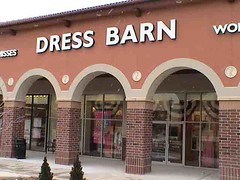 Incentives for Dress Barn? Photo: Aboite Independent.
Incentives for Dress Barn? Photo: Aboite Independent.3. And the piece "Speaking about Libraries, Public Assets, Community Amenities, and Leveraging Municipal actions.
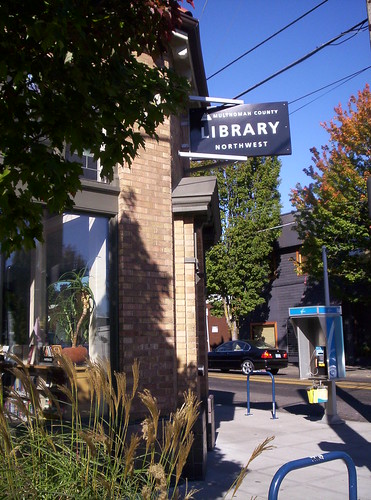 Northwest Library, Portland Oregon. Zero-setback from the sidewalk, prominent streetcorner location.
Northwest Library, Portland Oregon. Zero-setback from the sidewalk, prominent streetcorner location.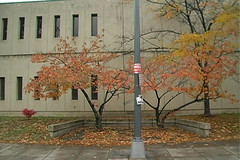 Prison or Library? Watha T. Daniel Public Library, Rhode Island Avenue NW, Washington, DC. Photo: maps.a9.com
Prison or Library? Watha T. Daniel Public Library, Rhode Island Avenue NW, Washington, DC. Photo: maps.a9.com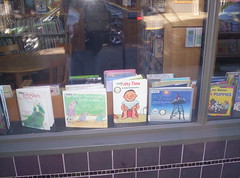 Northwest Library, Portland Oregon.
Northwest Library, Portland Oregon.



0 Comments:
Post a Comment
<< Home